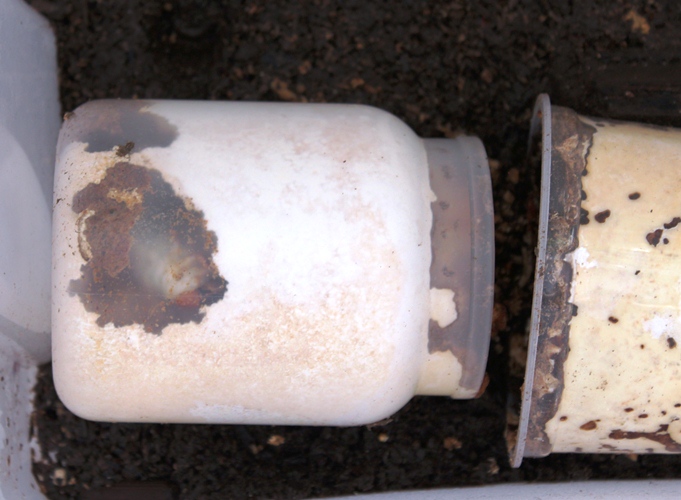I have recently written about Mesotopus tarandus breeding, and mainly about the importance of the different kinshi types.
I have of course tested the different kinshi strains even more, and also received quite a bit of feedback from other breeders (mainly from Japan).
I had really good egg laying results with my female now, on average she lays about 2 -3 eggs every month. What is quite unique for a Lucanid beetle, is that she stays in the kinshi bottle until the eggs hatch. Then she leaves the bottle, eats one or two beetle jellies and digs into the next fresh kinshi bottle. I have also experimented more with Kinshi made from Reishi, Ganoderma lucidum. The advantage of Ganoderma lucidum is that it is much more resistant to contamination than other mushroom species, and quite a fast grower. This makes the production and stability of kinshi much better.
I have now had successive egg depositions in Ganoderma lucidum kinshi, and the larvae are also growing quite well in the new substrat. I also had to shift my big L3 larva from Trametes versicolor kinshi into Reishi kinshi, because I did not have any bottles available. The larva ate for a few weeks and then pupated into a medium sized male. Younger larvae are growing quite well in the Reishi kinshi as well.
Thinking about it now, I am quite surprised how relatively easy the breeding of Mesotopus tarandus is, given you can get the kinshi bottles. Thanks to Daniel AMBUEHL again for his constant supply of Reishi bottles for my beetle breedings. Plus, Daniel also has developed a method to inoculate sawdust with Pleurotus pulmonarius and Ganoderma lucidum in an insterile way, getting rid of the ‘pressure cooking’ and laminar flow requirements.
I am currently also testing Dorcus curvidens larvae of Reishi kinshi. It seems to go well, but I will need some more time to evaluate the results.
I will still have to try inoculated wood pieces, but this takes some time, as the fungus needs to make the wood softer first.


Leave a Reply